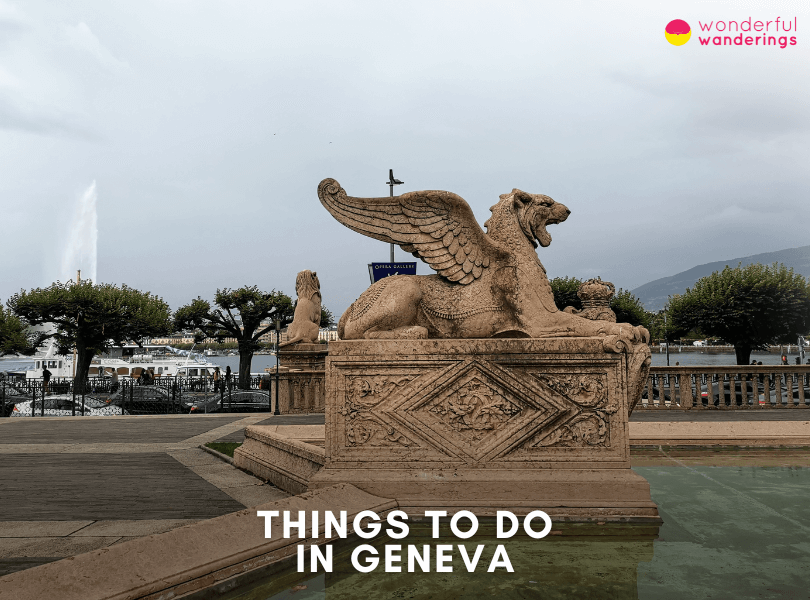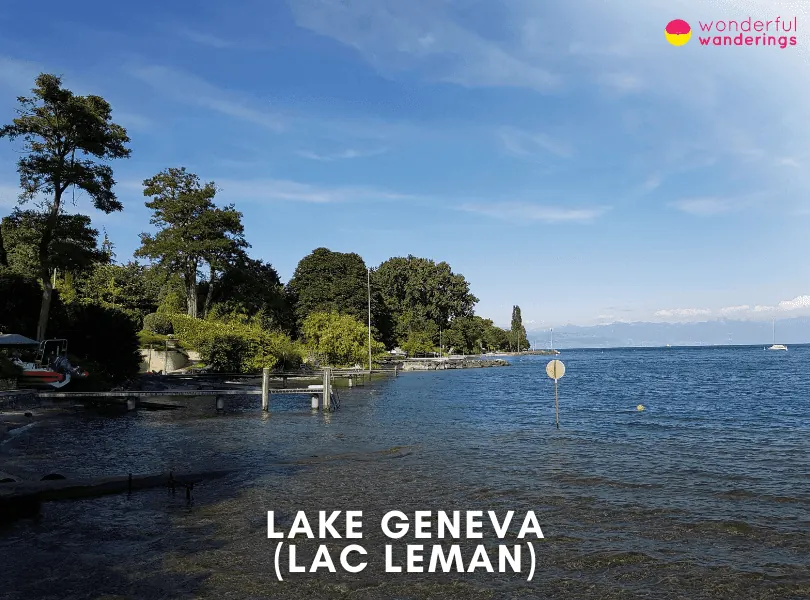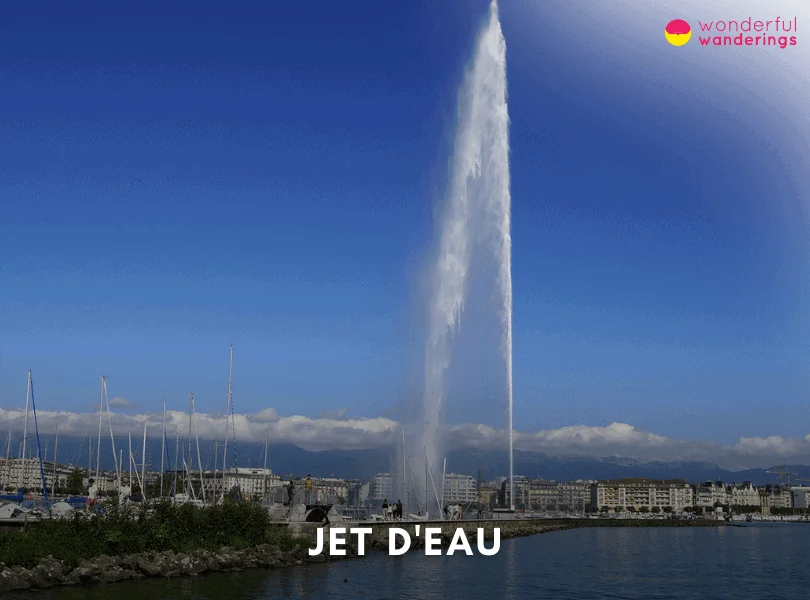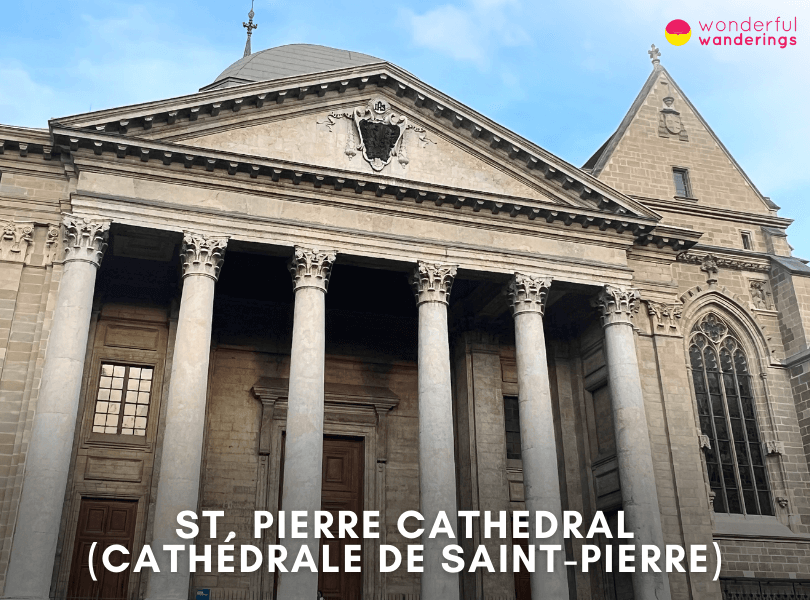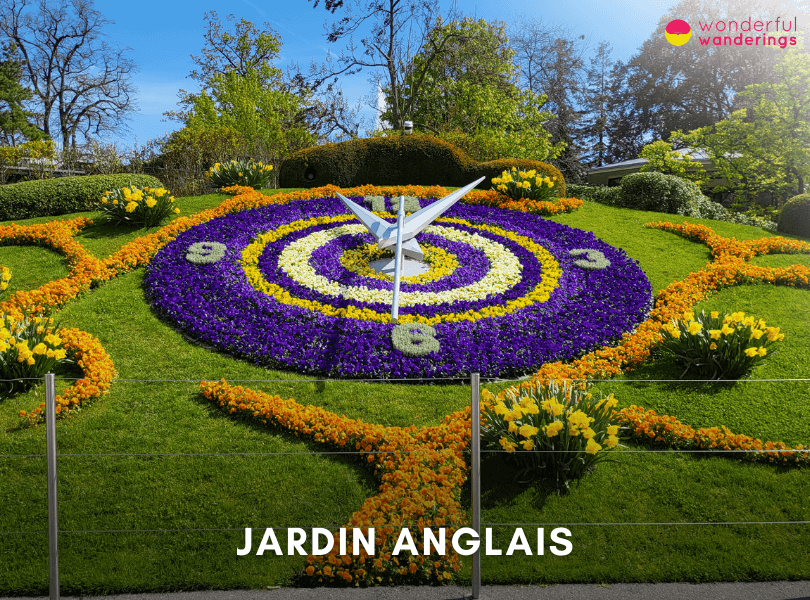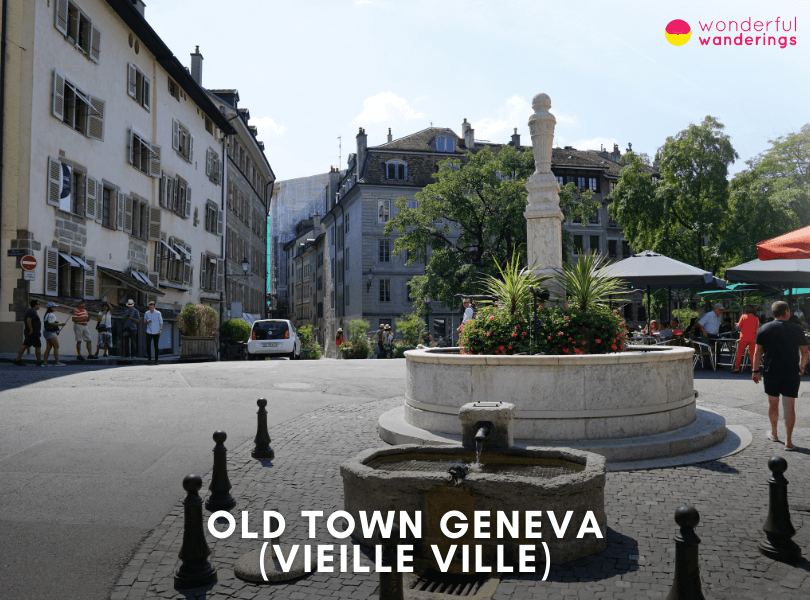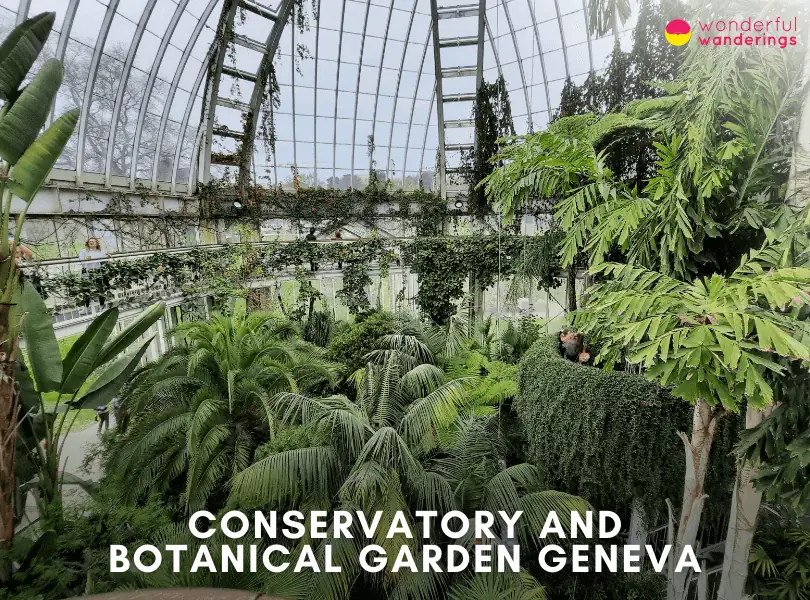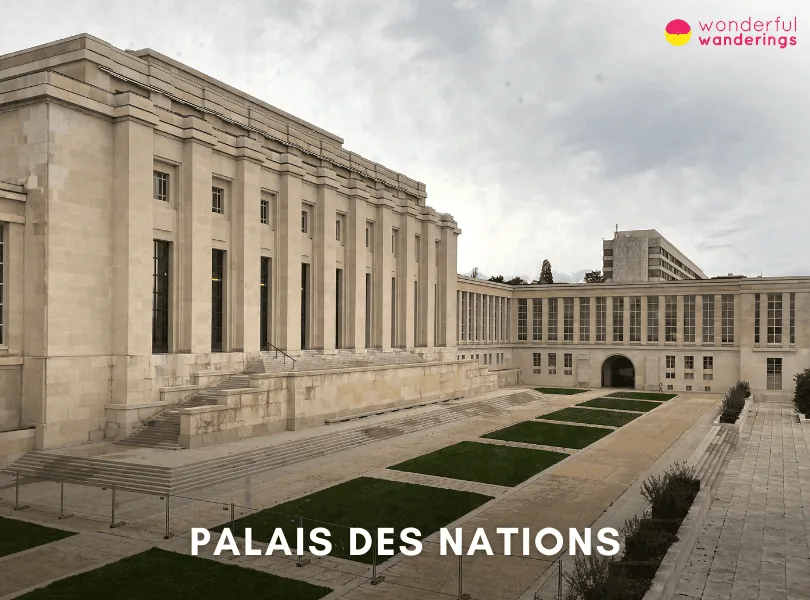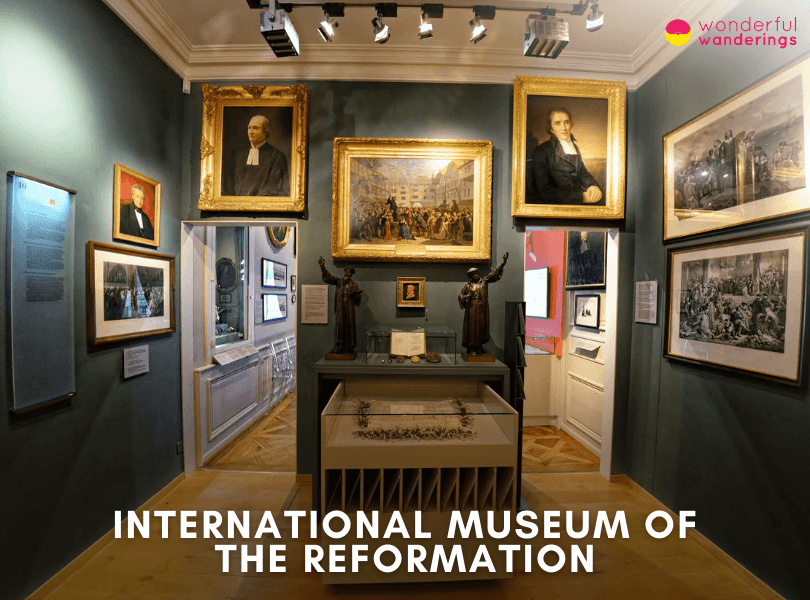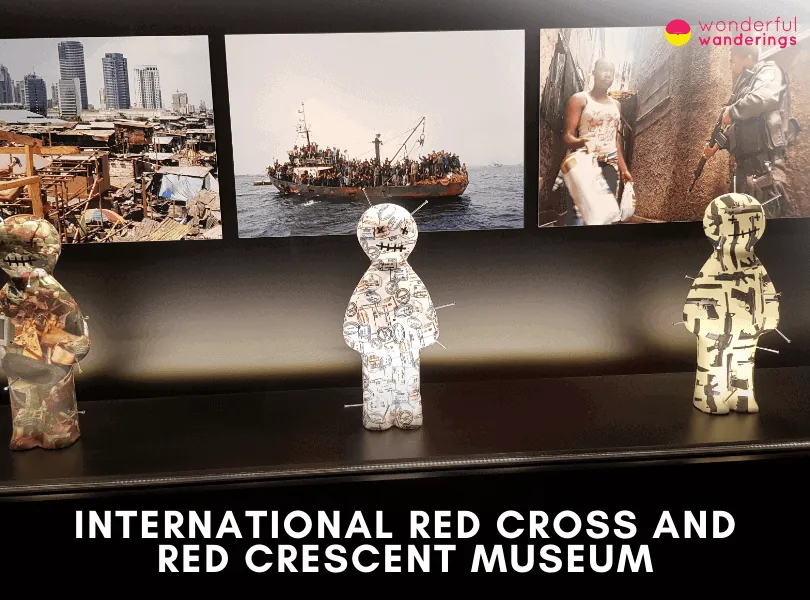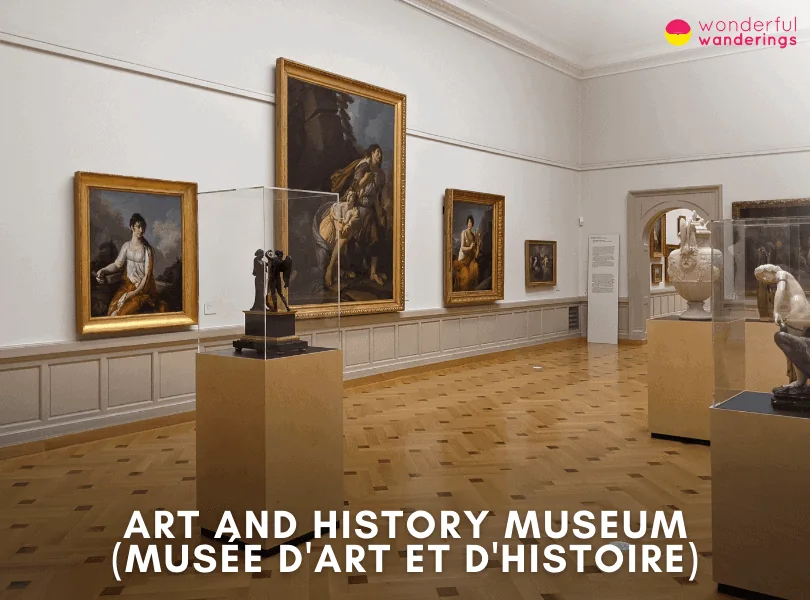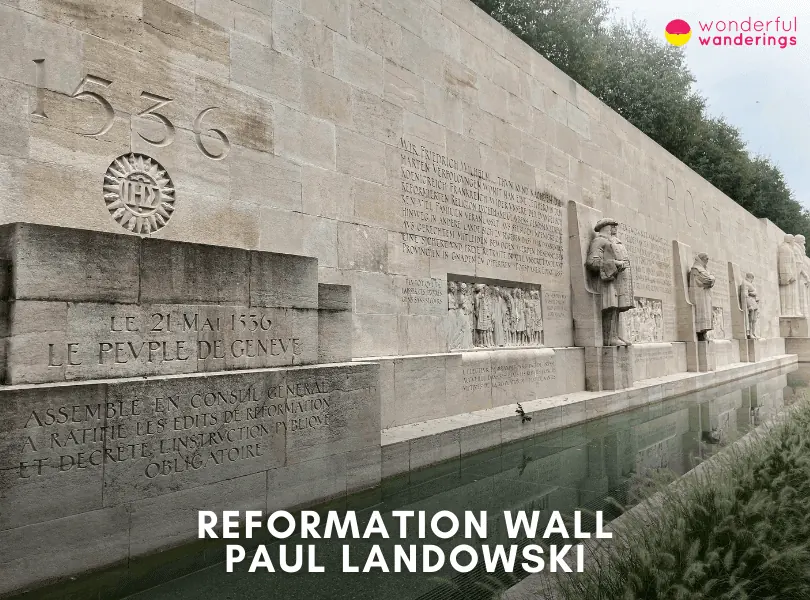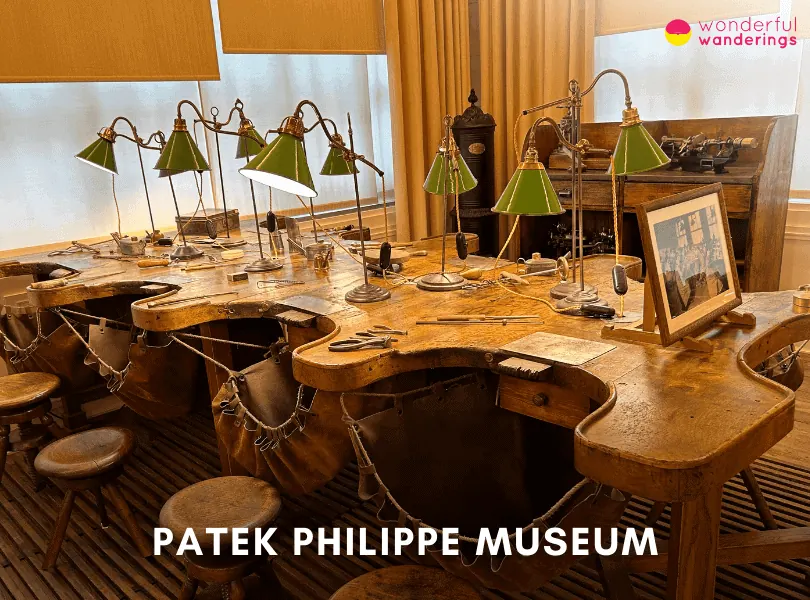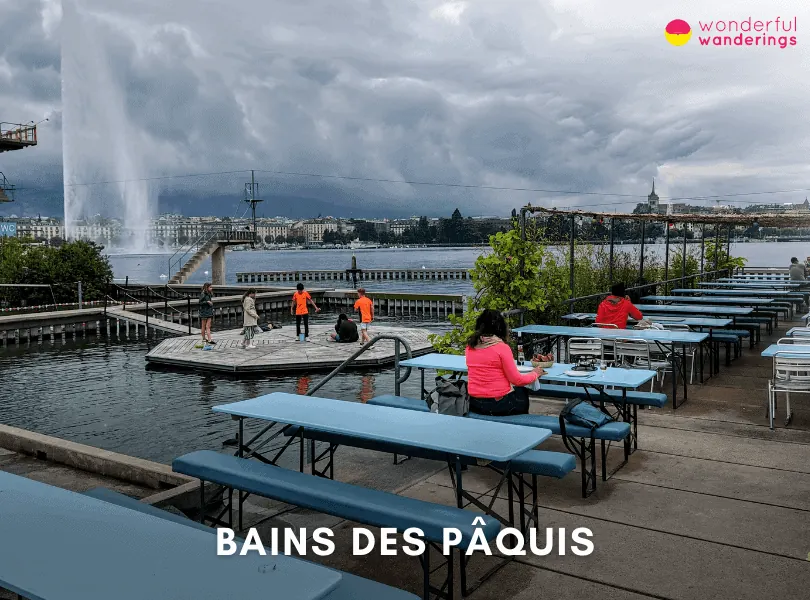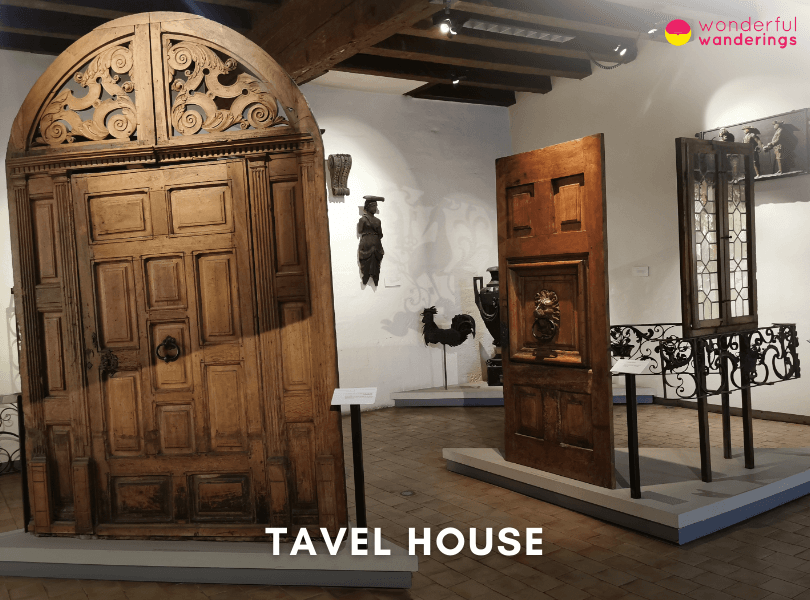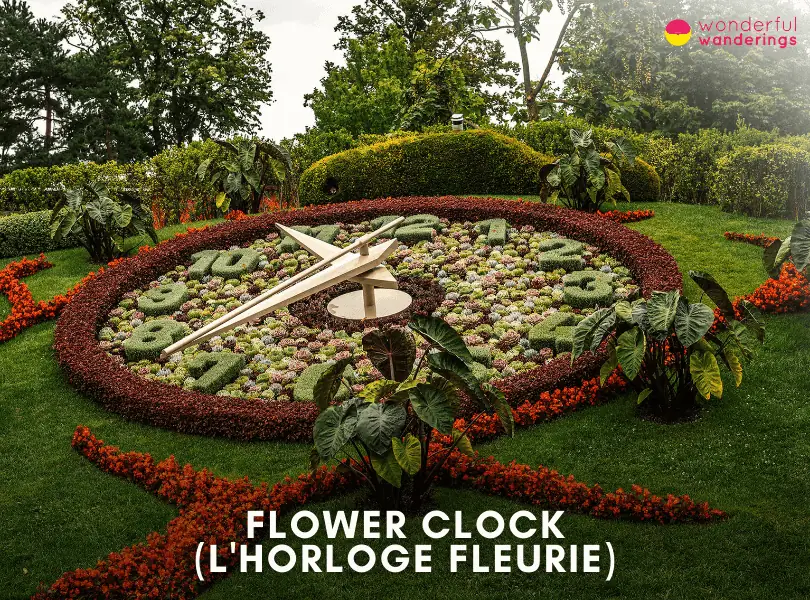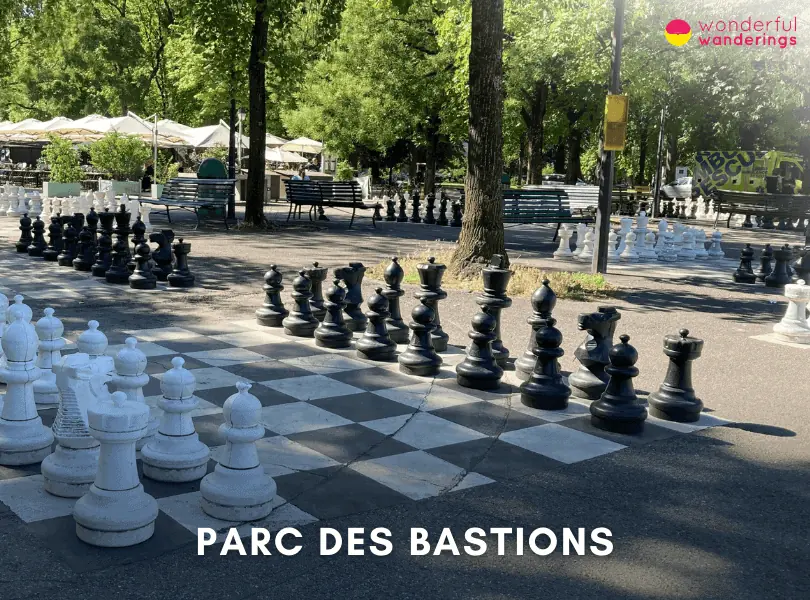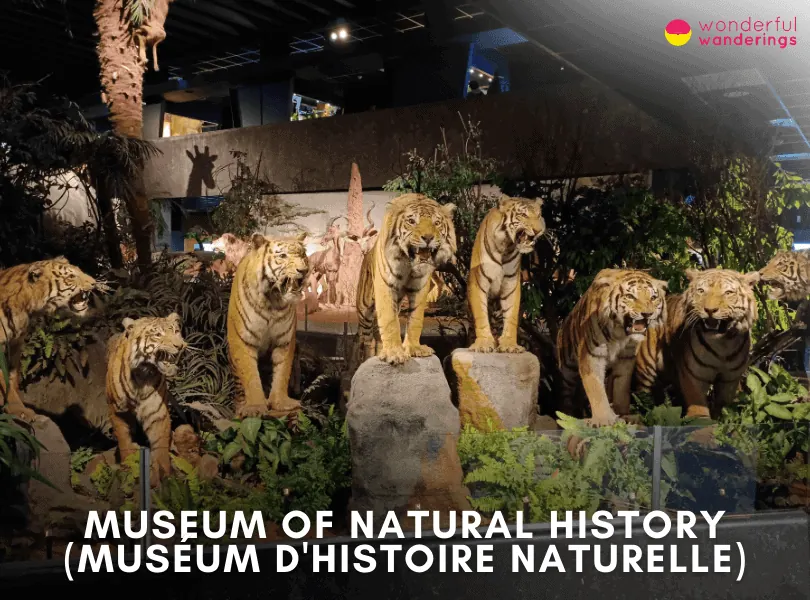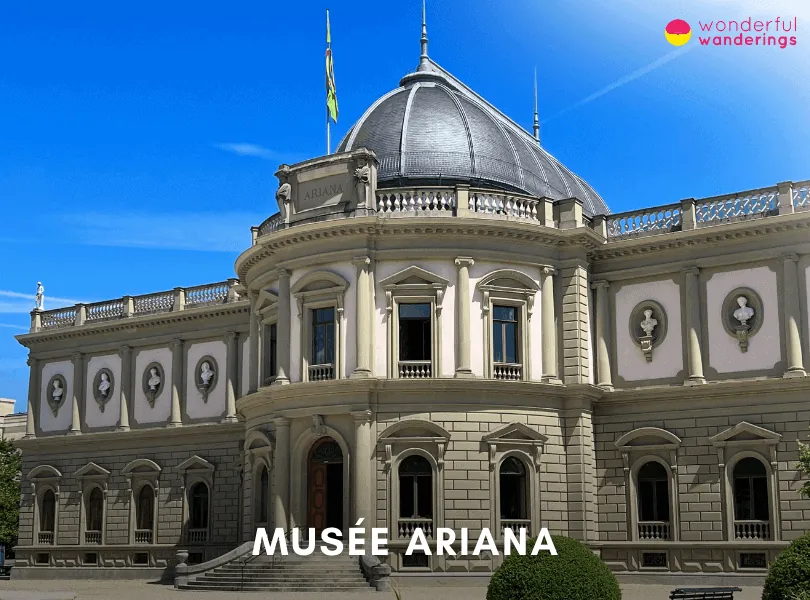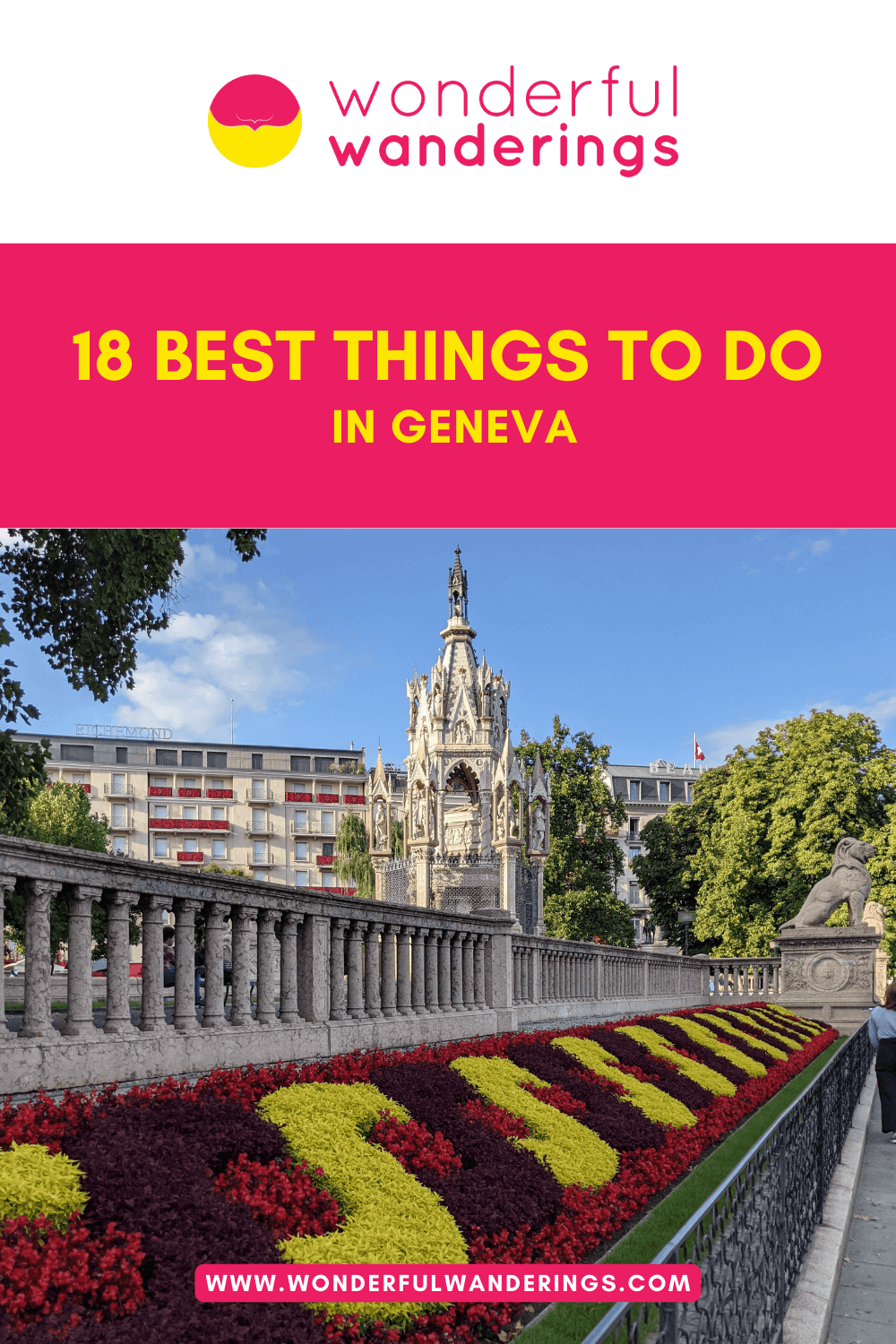Geneva is located in western Switzerland at the southern tip of Lake Geneva. It sits on the Rhone River north of the Swiss Alps and the Jura Mountains. Geneva is surrounded by France on three sides, with the Rhone forming the border between Switzerland and France as it flows out of the lake. Geneva’s location on the lake and along major Alpine transportation routes has been an important center of trade, finance and diplomacy for centuries. The city has a population of 191,877 as of 2023.
Geneva’s recorded history stretches back over 2,000 years to when it was a border town of the Roman Empire. It later became the seat of a bishopric in the 4th century AD. Control of the city changed hands several times between Burgundy and the Holy Roman Empire over the following centuries. By the 16th century, Geneva had developed into an independent, predominantly Protestant republic. Geneva was considered the “Protestant Rome” after religious reformer John Calvin made it the center of his reform movement.
Geneva offers visitors a wide variety of attractions and activities to enjoy. Top sights include exploring the scenic Lake Geneva waterfront and taking a boat cruise to medieval Chillon Castle; photographing the iconic 140-meter Jet d’Eau fountain shooting into the air; wandering the historic Old Town to see the 12th-century Gothic St. Pierre Cathedral, 16th-century Arsenal and other landmarks; and learning about Geneva’s pivotal role in the Protestant Reformation at the International Museum of the Reformation and Reformation Wall. The city also houses world-class museums like the International Red Cross and Red Crescent Museum, the Patek Philippe Museum, which displays 500 years of watchmaking and the Art and History Museum, with its exceptional fine arts and archaeology collections. Visitors can also stroll through the city’s botanic gardens and parks, sample Swiss chocolate and fondue specialties or make easy day trips around Lausanne’s vineyards. Geneva is in the Central European Time Zone, UTC/GMT +1 hour. It observes Daylight Saving Time with clocks moving forward by 1 hour to UTC/GMT + 2 hours between late March and late October in the summer months.
Listed below are things to do in Geneva.
- Lake Geneva. Lake Geneva (Lac Léman) is a scenic, crescent-shaped lake spanning the border between Switzerland and France. It lies along the Rhône River between the Swiss town of Villeneuve and the French towns of Evian-les-Bains and Thonon-les-Bains. It is known for its dramatic mountain views of the Savoy Alps and vineyards rising along the northern shores near Swiss towns like Lausanne and Montreux. The lake offers many activities like boat cruises, beaches and kid-friendly attractions. Major towns connected by Lake Geneva include Geneva and Lausanne in Switzerland and Evian-les-Bains and Thonon-les-Bains in France.
- Jet d’Eau. The Jet d’Eau is a 140-meter tall fountain on the shore of Lake Geneva in Geneva, Switzerland. Powerful pumps propel water to a height of 140 meters at 200 km/hr, making it one of the tallest fountains in the world. Visitors can view, photograph and get soaked by the fountain’s spray from March through October. The fountain can be easily reached via public transport.
- St. Pierre Cathedral. St. Pierre Cathedral is in Geneva’s Old Town and dates back to the 4th century AD. The current Gothic cathedral dates to the 12th century. It was where John Calvin preached after Reformers took control in 1536, making it a center of the Protestant Reformation. Visitors can see Calvin’s chair and Reformation-related sites. The austere, whitewashed interior reflects Protestant aesthetics. The cathedral features architectural grandeur, mosaics and stained glass. Tours provide insights into its history.
- Jardin Anglais. The Jardin Anglais is a lakeside park along Lake Geneva in Geneva, Switzerland. Created in 1855 on newly exposed land, it features curving paths and informal plantings in the English garden style. The park offers views of the lake, Jet d’Eau fountain and mountains. Visitors can stroll along tree-lined paths, have a lakefront meal, enjoy free summer concerts and view landmarks like the floral clock.
- Old Town Geneva. Old Town Geneva is located on a hill rising from the shores of Lake Geneva. The medieval quarter features cobblestone lanes and historic buildings reflecting its complex 2,000-year history, dating back to ancient Celtic and Roman settlements. As where John Calvin brought the Protestant Reformation in 1536, sites like Calvin’s Chair and the Reformation Wall still stand. Visitors can explore sights like Place du Bourg-de-Four square, Maison Tavel, St. Pierre Cathedral, unique museums, art galleries, cafés and restaurants.
- Conservatory and Botanical Garden. The Conservatory and Botanical Garden is located in Chambésy, a suburb of Geneva, Switzerland. The 28-hectare gardens contain over 12,000 plant species worldwide, making it a “living museum”. It houses one of the world’s largest herbaria with 6 million archived samples. Visitors can explore diverse botanical collections and themed areas. Special exhibitions are also held in the elegant glass greenhouses dating to 1910 and 1911. The gardens offer recreational and educational visits for all ages and interests.
- Palais des Nations. The Palais des Nations serves as the European headquarters of the United Nations in Geneva, Switzerland. The Palais was built between 1929 and 1936 in Ariana Park to house the League of Nations. Over 10,000 meetings involving 75,000 delegates occur there annually. Visitors can take guided tours to learn about the UN’s history and current operations. Tours highlight sites like the Human Rights Room, grand Assembly Hall, Council Chamber, library and gardens.
- International Museum of the Reformation. The International Museum of the Reformation (MIR) is next to St. Pierre Cathedral in Old Town Geneva. Opened in 2005, it is the world’s only museum devoted to the Protestant Reformation’s history and impact. The MIR holds over 500 artifacts, works of art, documents and installations spanning the 16th century to today. Visitors can explore rooms arranged chronologically to cover major aspects of Reformation history. Explanations in 10 languages and a free audio guide are provided. Temporary exhibitions and public events are also frequently held.
1. Lake Geneva (Lac Leman)
Lake Geneva, known locally in French as Lac Léman, is a crescent-shaped lake located on the border between Switzerland and France. It lies on the course of the Rhône River, with the eastern end of the lake beginning where the Rhône enters near the Swiss town of Villeneuve. The lake stretches 73 kilometers (45 miles) from east to west, reaching its maximum width of 14 kilometers (8.7 miles) between Rolle and Thonon-les-Bains on the northern and southern shores.
The lake offers incredibly scenic views of vineyards rising on slopes along the northern shores near Lausanne and Montreux in Switzerland. The southern Savoy Alps also provide a dramatic mountain backdrop, especially around towns like Evian-les-Bains in France. The lake has long attracted famous residents and visitors for its natural beauty. Activities on and around Lake Geneva cater to all tastes and ages. One major highlight is a boat cruise to admire the scenery and access sites like Chillon Castle, which is built on the water. Cruise lines like CGN regularly offer public transportation routes between Swiss and French towns during warmer months. Private boat tours and dinner cruises are also available for those seeking a more exclusive experience on Lake Geneva. For families, kid-friendly activities include lakeside beaches with playgrounds and shallow swimming areas, like Plage des Eaux-Vives in Geneva. Museums like the Swiss Chocolate Adventure have interactive exhibits to entertain children while teaching about local culture and history. Adults can tour vineyards rising from the lake’s shores or visit the Olympic Museum in Lausanne, recognizing the city’s history as host for the IOC headquarters.
Major towns connected by the lakefront include Geneva and Lausanne in Switzerland and Evian-les-Bains and Thonon-les-Bains in France, making it easy to access Lake Geneva. Geneva International Airport services over 100 airlines, while rail links like the GoldenPass Line connect efficiently to Swiss towns. Driving is also possible around the lake, apart from between Thonon and Evian, where you need to take a ferry crossing. As Lake Geneva straddles two countries, visitors should remember to bring valid passports and ID when crossing between Swiss and French borders. There are no admission fees to access public areas around the lake.
2. Jet d’Eau
The Jet d’Eau is on the shore of Lake Geneva (Lac Léman) in Geneva, Switzerland. The 140-meter-tall fountain has been Geneva’s iconic landmark and symbol since 1891. It was initially constructed as a safety valve to release excess hydraulic pressure at the Coulouvrenière hydropower factory and the first Jet d’Eau reached only 30 meters high. It was recognized and, in 1891, relocated to the current site at the end of the Eaux-Vives pier to help celebrate Geneva’s hosting of the Federal Gymnastics Festival.
Jet d’Eau features powerful pumps that propel 500 liters of water per second to a towering height of 140 meters at a speed of 200 km/hr, making it one of the tallest fountains in the world. The momentum of the water jet is so strong that visitors on the pier often get soaked by blowing spray. Visitors of all ages can enjoy various activities around the Jet d’Eau during its operating months from March through October. Getting soaked on the pier, viewing it from nearby vantage points, photographing rainbows in its mist, dining at lakeside cafés with fountain views, taking a lake cruise passing by the water plume – the Jet d’Eau makes for a lively Geneva attraction whether visitors seek adventure, photography, inspiration or simple fun.
The fountain can easily be reached via Geneva’s efficient public transport system, with multiple bus lines stopping at the “Rue du Lac” or “Vollandes” stops right by the Jet d’Eau. Walking around the fountain along Geneva’s scenic lake promenades and Quai Gustave-Ador is highly recommended. Those staying near the train station can reach the Jet d’Eau in around 10 minutes on foot. There is no cost for viewing the Jet d’Eau fountain up close to the public pier or a distance. Lighting up the fountain for special events comes at a cost for organizers. Guided tours of the technical pumping facility arranged by SIG, the company operating the Jet d’Eau, may involve fees for commercial entities but are free for schools and public organizations.
3. St. Pierre Cathedral (Cathédrale de Saint-Pierre)
The St. Pierre Cathedral is in the Old Town of Geneva, Switzerland. The cathedral sits atop a hill rising from the banks of Lake Geneva, visible from many vantage points around the city. St. Pierre Cathedral dates back to the 4th century AD when an early Christian church was built. The current Gothic-style cathedral was started in the 12th century, with elements added over successive centuries. St. Pierre Cathedral’s pivotal role in the Protestant Reformation makes it truly special. The cathedral was where John Calvin preached after Reformers took control of Geneva’s religious affairs in 1536. Calvin made St. Pierre his adopted home church. His wooden chair remains inside today, symbolizing his theological influence over Geneva. The austere, whitewashed walls of the cathedral interior reflect the stripped-down, iconoclastic aesthetic favored by Calvin and other Protestant reformers.
Visitors to St. Pierre Cathedral can see Calvin’s chair and the Reformation Wall fresco nearby depicting major Protestant figures like Calvin, Farel, Beza and Knox. People of all ages can appreciate the cathedral’s architectural grandeur, detailed mosaics and stained glass. For those interested in history, tours provide insights into St. Pierre’s evolution into an epicenter of the Reformation. Visitors can also go down to an archaeological site below the cathedral, where artifacts like a 1st-century BC Roman tomb have been found. St. Pierre Cathedral appeals most to visitors interested in religious history, theology, Protestantism, architecture and art. The cathedral holds musical events and other cultural activities, broadening its audience appeal.
St. Pierre Cathedral is centrally located in Geneva’s pedestrianized Old Town, making access easy via public transport, bicycle or on foot. Multiple bus lines stop near the cathedral along streets like Rue Henri-Fazy and Rue de l’Hotel de Ville. Entry to St. Pierre Cathedral is free with no admission costs. Guided tours and tower climbs also come with varying prices, but simple entry to appreciate this historic church’s architecture and significance is free to all.
4. Jardin Anglais
The Jardin Anglais (English Garden) is along the shore of Lake Geneva in the city of Geneva, Switzerland. The 25,430 sq meter trapezoid-shaped park marks the beginning of the scenic Lake Geneva promenade. It has a history dating back to 1855 when the park was created on land newly exposed from the lake. Its shape evolved when the Pont du Mont-Blanc bridge was built in 1863. Jardin Anglais continued expanding by adding landmarks like the National Monument in 1869 and the famous floral clock in 1955.
The Jardin Anglais is the central location for enjoying Lake Geneva views. As Geneva’s first public park designed in the “English garden” style with curving paths and informal plantings, it became known as the “English Garden” over its original name of “Promenade du Lac”. The park’s layout allows open views across the lake, showcasing the Jet d’Eau fountain and mountains beyond. Visitors to the Jardin Anglais can stroll along tree-lined pathways and manicured lawns, have a coffee or meal at the lakeside restaurant, enjoy free musical performances at the bandstand gazebo during summer and view landmarks like the Four Seasons fountain and floral clock. The park also hosts an annual Christmas market. Its beautiful old trees provide shade, including a 160-year-old ginkgo tree. The Jardin Anglais appeals to all ages and interests. The flower clock draws tourists for photos while the large open lawns give kids space to play. The park offers both lively cafes and quiet corners for reading. Lovers of nature, city views, people-watching and free entertainment are all drawn to this urban oasis.
The Jardin Anglais is easily accessible via Geneva’s efficient public transportation system. Multiple bus lines stop directly next to the park at the “Monument National” and “Mont Blanc” stops. The central train station Cornavin is a 12-minute walk or 5-minute tram ride away. Travelers can find parking in the underground garage below the adjacent Hotel Métropole. No admission fees are required to enjoy the sights and amenities of the Jardin Anglais. Visitors pay only for food, drinks or activities like renting a paddleboat on the lake from the adjoining dock area.
5. Old Town Geneva (Vieille Ville)
Old Town Geneva, locally known as Vieille Ville in French, is on a hill rising from the southern shores of Lake Geneva in the city of Geneva, Switzerland. Its boundaries lie between the Mont Blanc Bridge to the west and the Plainpalais neighborhood to the south. Old Town Geneva has origins dating back to a Celtic settlement but rose to prominence as a Roman outpost in 58 BC when Julius Caesar arrived. Over its 2000-year history, control over Geneva changed hands between the Holy Roman Empire, France and the Dukes of Savoy. It joined the Swiss Confederation as an independent republic in 1815. This complex past is visible in the warren of medieval lanes and historic buildings that characterize charming Old Town today.
Old Town Geneva’s pivotal role in the Protestant Reformation makes it truly special. Having fled persecution in France, John Calvin made St. Pierre his home church in 1536 and preached Reformed theology that reshaped Christianity. Markers of this history, like Calvin’s Chair and the Reformation Wall, still stand. Even with modern Geneva expanding around it, Old Town retains its enchanting historic fabric. Visitors can explore the cobblestone streets of Old Town, passing sights like Place du Bourg-de-Four square, Maison Tavel, the Old Arsenal and St. Pierre Cathedral. Climbing the cathedral tower provides panoramic views. The neighborhood also holds unique museums like the International Museum of the Reformation, while antique stores and art galleries abound. Cafés and restaurants let visitors soak in the medieval ambiance over Swiss wine and fondue. Old Town appeals to all visitors, including families. Kids can run through Bastions Park while parents appreciate the history. Frequent festivals and a Christmas market also enliven the area.
Geneva’s efficient public transportation system makes Old Town very accessible. Buses 8 and 36 and various tram lines stop at “Molard” or “Saint-Antoine” stations by the cathedral’s edge of Old Town. Geneva Airport has direct rail connections to the central Cornavin station. Visitors can park in the underground Saint-Antoine parking garage near Old Town’s entrance. Entry to walk the streets of Old Town Geneva and appreciate sites like the cathedral exterior or Place du Bourg-de-Four is free. Visiting museum attractions like the Reformation Museum, tower climbs and temporary exhibits have separate admission fees.
6. Conservatory and Botanical Garden Geneva
The Conservatory and Botanical Garden (Conservatoire et Jardin botaniques de la Ville de Genève) is located at Chemin de l’Impératrice 1, 1292 Chambésy, a suburb of Geneva, Switzerland. The Botanical Garden has a history dating back to the early 19th century. Geneva’s first botanical gardens were created in 1817 in Bastions Park to express the naturalist movement of the time. The gardens were relocated to their current 28-hectare site, specifically constructed to house the garden’s vast herbarium collection. The elegant glass and iron greenhouses were added from 1910 to 1911. Over the years, the gardens continued expanding through gifts like the 1922 Emile Burnat herbarium donation containing 2 million specimens.
The Botanical Garden has grown into a “living museum” containing over 12,000 plant species worldwide. The gardens boast one of the world’s largest herbaria, with nearly 6 million archived botanical samples. This scientific collection and beautifully themed garden areas offer recreational and educational visits. Visitors to the Botanical Garden can explore several sections, such as the arboretum, alpine rock gardens, orchid houses and medicinal plant collections. Special themed exhibitions are also held in the greenhouses. The gardens contain over 350 labeled botanical species to enhance one’s knowledge of plants. Visitors can simply relax or picnic on the lawns, taking in lovely views of the Alps. The Botanicum area has family-friendly facilities and activities for children to discover the plant world. The Conservatory and Botanical Garden appeals to all ages and interests – from botanists to families to nature lovers. The gardens aim to be accessible to visitors with reduced mobility. Visitors should note that dogs and bikes are not permitted.
The Botanical Garden is easily reached by public transport, 8 kilometers (4 miles) from downtown Geneva. Visitors can take bus 53 from Geneva’s Cornavin train station or bus nine from Geneva airport to the ‘Jardin Botanique stop. Limited parking is available onsite. Entry to the Conservatory and Botanical Garden is free for all visitors, including for temporary exhibitions. The greenhouses and gardens are open daily from 8 am to 7.30 pm during summer, closing earlier in winter. Guided tours and special educational programming may have additional fees.
7. Palais des Nations
The Palais des Nations is located at 14 Avenue de la Paix in Geneva, Switzerland. Situated in the 46-hectare Ariana Park, donated to the City of Geneva in 1890, the Palais has a prominent position overlooking Lake Geneva. The Palais was constructed between 1929 and 1936 to serve as the headquarters of the League of Nations, the precursor to the United Nations. An international architectural design competition was held in the 1920s to choose the Palais design, with the final plans created by a collaborative team of European architects. The Palais later became the European headquarters of the UN in 1966.
The Palais des Nations hosted some of the most important events and negotiations of the 20th century under the League of Nations and continues to be a hub of multilateral diplomacy as the home of the UN Office in Geneva. Over 10,000 intergovernmental meetings involving more than 75,000 delegates occur at the Palais annually. The buildings exemplify the 1920s Art Deco style, with decorative details donated by member states. Visitors to the Palais des Nations can take a guided tour to discover the history and work of the UN. Tours last around an hour and highlight sites like the Human Rights and Alliance of Civilizations Room decorated by Miquel Barceló, the grand Assembly Hall, the Council Chamber and the Palais Library and Gardens. Visitors learn about the UN’s objectives, operations and current activities in Geneva and worldwide.
The tours appeal to visitors of all ages and interests. Families can appreciate the architecture and gardens, while history or international relations enthusiasts gain insight into the Palais’ pivotal role in 20th-century diplomacy. The Palais des Nations is easily accessible via public transport from downtown Geneva. The nearest bus stops are Appia or Nations, both around a 5-10 minute walk from the Palais. Geneva Airport connects directly to these bus stops too. Visitors enter through the Pregny Gate Visitor Centre, requiring a valid photo ID. The Palais grounds can be explored for free without taking a guided tour.
8. International Museum of the Reformation
The International Museum of the Reformation (Musée International de la Réforme or MIR) is located in the heart of Old Town Geneva at Cour St-Pierre 4, 1204 Geneva, Switzerland. The museum is next to St. Pierre Cathedral in the historic 18th-century Maison Mallet building. The MIR has a history dating back to the 1950s when plans were first made to establish a museum dedicated to Geneva’s pivotal role in the 16th-century Protestant Reformation led by John Calvin. After years of planning, the museum finally opened in 2005 to mark the 500th anniversary of Calvin’s birth. It is the only secular museum in the world devoted to the history of the Reformation and Protestantism’s social and cultural impact.
The MIR holds a collection of over 500 artifacts, works of art, documents and multimedia installations spanning the 16th century to today. Highlights include paintings, books, medals, engravings and personal letters from leading Reformers like Martin Luther, John Calvin, Huldrych Zwingli and John Knox. The MIR also devoted special attention to Geneva’s experience of the Reformation. Visitors can explore the MIR’s permanent collection through 12 rooms arranged chronologically and thematically to cover major aspects of Reformation history. Explanations of key pieces are provided in 10 languages through informational panels and a free audio guide. Temporary exhibitions on special topics are also held twice annually. Recent shows have covered Protestantism’s links to philosophy, music and human rights. Talks, concerts and guided tours are also frequently organized for those wanting a more in-depth experience. The museum appeals to visitors of all ages and interests. Adults gain insight into the forces that shaped religious and political developments in Europe, while even children can enjoy the sights and sounds of this innovative museum.
The MIR is easily accessed in central Geneva. Multiple bus lines stop steps away on Rue de l’Hotel de Ville, while Geneva’s main train station, Cornavin. Visitors can find parking in the underground Saint-Antoine garage near Old Town’s edge. Entry to the International Museum of the Reformation’s permanent collection is 13 CHF (€13, $15, £11). Children under 6 enter for free. Special exhibitions, events and guided tours sometimes carry additional fees.
9. International Red Cross and Red Crescent Museum
The International Red Cross and Red Crescent Museum (Musée international de la Croix-Rouge et du Croissant-Rouge) is located at Avenue de la Paix 17, 1202 Geneva, Switzerland. The museum has a history dating back to the 1950s when initial proposals were put forward to establish a museum recounting the pivotal role Geneva played in founding the Red Cross movement. It is the only museum in the world devoted to the history and current challenges surrounding humanitarian action carried out by the International Red Cross and Red Crescent Movement.
The museum highlights the permanent exhibition entitled “The Humanitarian Adventure”. Divided into three separate spaces designed by world-renowned architects, it aims to initiate visitors into the key issues facing modern humanitarian work. Themes include “Defending Human Dignity” (Gringo Cardia, Brazil), “Reconstructing Family Links” (Diébédo Francis Kéré, Burkina Faso) and “Reducing Natural Risks” (Shigeru Ban, Japan) – each told through artistic interpretations conveying emotion as much as information.
Visitors can tour the spaces’ displays conveying the impacts of war, disaster and migration on human dignity, families and communities. The exhibitions incorporate artifacts, documents, sculptures and video testimonies to encourage debate around past challenges and future solutions for humanitarian crises. Interactive elements like consultation booths, memorial walls and multimedia globes showing real-time field operations make the experience educational. The museum appeals most to visitors who understand the complex issues. Visitors focused on history, art or world affairs will find the greatest resonance in the museum.
The International Red Cross and Red Crescent Museum are easily accessible, given their location in Geneva’s international district. It is directly served by Bus 8 and 28, with the nearest stop called Appia right at the museum entrance. Limited parking is available at the museum for those driving. Entry tickets to the permanent “Humanitarian Adventure” exhibition cost 15 CHF (€16, $17, £14). Children under 12 enter for free. Special exhibitions, events and guided tours occasionally carry additional fees.
10. Art and History Museum (Musée d’Art et d’Histoire)
The Art and History Museum, known locally in French as the Musée d’Art et d’Histoire, is located in the heart of Geneva’s Old Town at Rue Charles-Galland 2, 1206 Geneva, Switzerland. The museum has a history dating back to 1826 when the Société des Arts de Genève was founded to create a public art space for the city. The museum opened in 1910 under the name Musée des Beaux-Arts and merged with Geneva’s archaeological museum, becoming the Musée d’Art et d’Histoire. The museum continued expanding its collections, spanning fine arts, applied arts and local history.
The Art and History Museum features a fine arts collection that covers Western painting, sculpture and decorative arts from the Middle Ages to the mid-20th century. Highlights include Swiss works by 19th-century artists like Ferdinand Hodler, early Italian Renaissance paintings and Art Nouveau furniture by Hector Guimard. The museum also houses Geneva’s archaeology collection with nearly 1 million objects, including ancient Egyptian, Greek and Roman treasures. The applied arts section displays ceramics, clocks, jewelry, textiles and more, reflecting Geneva’s craftsmanship over 500 years. The Art and History Museum visitors can view the permanent collections spanning the museum’s 35 exhibition rooms and galleries. Temporary shows on special topics or artists are also frequently organized. The museum appeals to visitors interested in art, history and culture. Frequent public events like concerts and lectures aim to attract all audiences.
The Art and History Museum is easily accessible in downtown Geneva, across the river from the main train station Cornavin. Multiple tram lines and buses stop at the ‘Rue Charles Galland’ outside its entrance, making it convenient to reach for both visitors and locals. Limited paid parking is also available around the museum. Entry to Geneva’s Art and History Museum collections costs 15 CHF (€16, $17, £14). Children and young people up to age 18 enter the museum for free, making it a very family-friendly city attraction.
11. Reformation Wall – Paul Landowski (Mur des Réformateurs)
The Reformation Wall, known locally in French as the Mur des Réformateurs, is in the Old Town of Geneva at Promenade des Bastions 1, 1204 Geneva, Switzerland. The 100-meter-long monumental wall dates back to 1909, when it was erected to commemorate the 400th anniversary of John Calvin’s birth and the 350th anniversary of Geneva adopting the Protestant Reformation. The Reformation Wall commemorates Protestantism’s emergence in Geneva, led by John Calvin and others pictured, making the city a pillar of the Reformation alongside Wittenberg and Zurich. As a monumental work of art, the wall’s larger-than-life statues of Calvin, Farel, Beza and Knox have become iconic symbols of Geneva’s heritage as the “Protestant Rome”.
Visitors can view the imposing 100-meter-long wall with its five ten-meter-high statues in their alcoves, flanked by Corinthian columns. The park offers a scenic setting for admiring the monument’s grandeur with a backdrop of Old Town’s towers. Informational plaques provide details about each Reformation figure depicted. Behind the wall, the adjoining International Museum of the Reformation provides indoor exhibits exploring Protestant history. The Reformation Wall appeals to adults interested in religious history, art and architecture. Its location next to Bastions Park makes it easy for families to see the wall. The sight’s role as an iconic landmark also draws all tourists. The monument brings to life the intensity of religious conviction motivating early Protestant Reformers.
The Reformation Wall is in Old Town near public transit connections. Multiple bus lines stop nearby on Rue Henri Fazy. The Gare Cornavin Central train station is just over a kilometer away. Visitors can find parking at the underground Saint-Antoine garage near the Old Town ramparts. Visitors can freely view the Reformation Wall as an outdoor architectural monument and appreciate its symbolic importance in Geneva’s history as a cradle of religious change. The main expense would be optional entry to the adjoining Museum of the Reformation.
12. Patek Philippe Museum
The Patek Philippe Museum is at Rue des Vieux-Grenadiers 7, 1205 Geneva, Switzerland. The museum is housed in an early 20th-century building formerly used by Patek Philippe to manufacture watch cases, bracelets and chains. The museum has a history dating back to the 1990s, when Philippe Stern, Honorary President of Patek Philippe, first envisioned opening a space to showcase the company’s watchmaking heritage. The Patek Philippe Museum opened in 2001 to coincide with the brand’s 150th anniversary. It was founded to express the Stern family’s commitment to preserving the history of fine Swiss watchmaking and Patek Philippe’s legacy of innovation and craftsmanship since 1839.
The Patek Philippe Museum features the world’s most important collections of timepieces, automatons, enamel miniatures and horological literature. The museum is divided into two main sections – the Antiques Collection, showcasing European timepieces from the 16th to 19th centuries and the Patek Philippe Collection, tracing the manufacturer’s history through over 200 of its most exceptional watches and clocks. Visitors can explore the museum’s exhibits spanning over five centuries of horological development. Highlights include rare creations by innovators like Jean Toutin, Thomas Mudge, Abraham Louis Breguet and Patek Philippe masterpieces ranging from early pocket watches to modern wristwatch complications. The Patek Philippe Museum appeals to visitors of all ages. Watch enthusiasts gain insight into historical innovations and techniques while the museum offers glimpses into European cultural history, broadening its audience. Families can also appreciate the craftsmanship and beauty on display.
The Patek Philippe Museum is easily accessible by public transport. It is directly served by Bus 8, which stops just outside the museum entrance on Rue des Vieux-Grenadiers. Geneva’s central train station, Cornavin, is connected via a short bus ride. Limited visitor parking is available at the museum. Entry tickets to the Patek Philippe Museum’s permanent collections cost 10 CHF (€10, $11, £0). Discounted rates are available for senior visitors, students, groups and children. Special exhibitions and events may carry additional fees. Guided tours must be booked in advance for groups.
13. Bains des Pâquis
The Bains des Pâquis is at Quai du Mont-Blanc 30, 1201 Geneva, Switzerland. The Bains offer views across the lake towards the Jet d’Eau and mountains beyond. The Bains des Pâquis has a history dating back to 1872, when the first wooden bathing facility opened on this site. They became a public municipal bath in 1890, allowing working-class Genevans access to the lake for swimming and recreation. The Bains were rebuilt in 1932 in their current Bauhaus architectural style. The local citizens banded together to stop plans to demolish the Bains and replace them with a hotel, leading to major renovations in the 1990s that preserved their open, egalitarian spirit.
The Bains des Pâquis is called Geneva’s “beach”,. The Bains allow visitors to swim in the lake, sunbathe on docks, grab an affordable meal or drink at the café-restaurant or use the sauna, steam room and massage services. The diversity of the crowd makes it a Geneva social institution. The Bains host concerts, dances, poetry readings and more, with spectacular views of Lake Geneva as a backdrop. Visitors can access the 500-meter-long swimming area, beach facilities, play areas for kids, dive platform and lakeside restaurant. The sauna and steam rooms are closed in summer. The restaurant is open year-round in winter for fondue dining inside the wood cabin—the Bains appeal to all ages and interests with recreation and cultural amenities. Families enjoy the beach and lawn spaces, while adults can relax or socialize. The variety of events also draws all types of visitors to experience this unique lakefront spot reflective of Geneva’s life.
The Bains des Pâquis is easily accessible by public transport and located in central Geneva. Buses 6, 8, 9 and 25 stop at “Navigation” outside the entrance at Quai du Mont-Blanc. The Mouettes Genevoises shuttle boat also stops at the Pâquis dock. Limited parking is available nearby. Entry to the Bains varies by season. The sauna/hammam has separate fees. The Bains are open year-round with seasonal hours.
14. Tavel House
The Tavel House, locally known in French as the Maison Tavel, is in the heart of Old Town Geneva at Rue du Puits-Saint-Pierre 6, 1204 Geneva, Switzerland. The medieval building dates back to the 14th century, making it Geneva’s oldest preserved private residence. The house has special significance as an exceptionally well-preserved example of late medieval architecture in Switzerland. It was originally built in the 13th century for the wealthy Tavel family but was destroyed by a major city fire in 1334. The Tavel family rebuilt it even grander than before in the style of an urban mansion, giving it its distinctive turrets and fortified appearance. The house continued having aristocratic owners over the centuries until the City of Geneva finally acquired it in 1963.
Visitors can explore the house floor-by-floor to view artifacts like furniture, paintings, silverware, weapons and scale models showing Geneva’s growth over time. Highlights include the building’s Gothic architecture, the basement displaying remnants of earlier Roman settlements, a model apartment from the 1700-1800s recreating bourgeois lifestyle and the attic containing an enormous 7-meter long scale model of Geneva in 1850 before its fortified walls were removed. The diversity of artifacts and interiors transport you back through the centuries of Geneva’s past. The Tavel House Museum appeals to visitors of all ages. Adults gain insight into Geneva’s history, while kids can appreciate the visual sights and models of the city and its residents over time. Multimedia guides, workshops and events also aim to attract families and youth.
The Tavel House enjoys an easily accessible Old Town location near public transit connections. Multiple buses stop along Rue de l’Hotel de Ville near the Tavel HOuse. Visitors can park in the underground Saint-Antoine garage near Old Town. There are no admission costs to view the permanent collection and appreciate this pivotal site for the city’s history and architecture. Guided tours also have added rates but are not obligatory.
15. Flower Clock (L’horloge Fleurie)
The Flower Clock, known locally in French as L’horloge Fleurie, is next to the Jardin Anglais (English Garden) at Quai du Général-Guisan 28, 1204 Geneva, Switzerland. The flower clock sits on the western edge of the Jardin Anglais Park overlooking Lake Geneva near the famous Jet d’Eau fountain. The L’horloge Fleurie has a history dating back to 1955, when it was created to celebrate Geneva’s long tradition of luxury watchmaking and fine mechanics. The large flower clock was conceived as a tribute from Geneva’s horticulturalists and parks department to the city’s skilled watchmakers. The working clock face made of thousands of fresh flowers was installed along the lakefront promenade, quickly becoming an iconic emblem of Geneva.
The L’horloge Fleurie features a fusion of botanical beauty and technical precision. The flower clock combines approximately 6,500 flowering plants and shrubs swapped out 3-4 times yearly to match the changing seasons. Crocuses bloom in spring, marigolds and begonias in summer, chrysanthemums in fall and pansies in winter. The plants are intricately arranged into a 5-meter wide clock face with hour and minute hands powered by a satellite-controlled mechanism to keep perfect Swiss time. The clock’s second-hand stretches 2.5 meters long, making it the longest in the world. Visitors traveling along Geneva’s lakefront promenade can easily spot the L’horloge Fleurie next to the Jardin Anglais. The floral clock makes for a cheerful photo stop during a stroll, with the Jet d’Eau fountain and Mont Blanc mountain visible across the lake. Tourists and locals alike appreciate the clock’s bright colors, inventive landscaping and playful nod to Geneva’s watchmaking heritage. The flower varieties and designs shift with the seasons, meaning the attraction takes on a new look throughout the year. The family-friendly L’horloge Fleurie appeals to visitors of all ages and interests. Everyone visiting Geneva makes a point of seeing the city’s famous floral clock, whether they have a passion for botany, engineering or Swiss culture.
The Flower Clock’s location right next to the Jardin Anglais makes accessing it easy via Geneva’s efficient public transportation system. It sits between the Métropole and Monument National bus and tram stops. Geneva Airport connects directly to these stops, too. The lakefront promenade allows visitors to reach the floral clock on foot or by bicycle. Visitors can observe and photograph the L’horloge Fleurie for free. The best views are from across the street on the Quai Gustave-Ador or from within the Jardin Anglais Park.
16. Parc des Bastions
Parc des Bastions is in the heart of Geneva, Switzerland. Its address is Promenade des Bastions 1, 1204 Geneva. The park occupies the area between the city’s former fortification walls. Parc des Bastions has a history dating back to 1720 when the park was created to give Geneva residents green space for recreation while the city was closed off to protect against plague spreading from Southern France. Originally called “Belle Promenade”, the tree-lined walkway fell into disrepair over the 18th century. Botanist Augustin Pyrame de Candolle established Geneva’s first botanical garden. Orangeries, greenhouses and a conservatory were later added. Parc des Bastions became a public park when the botanical garden moved across the Arve River in 1904.
Parc des Bastions contains lawns, over 200 tree varieties and amenities like giant chess boards that attract leisure-seekers. It also provides the backdrop for major Old Town sites like the Reformation Wall featuring statues of Protestant reformers Calvin and Farel, Palais Eynard and the University of Geneva’s original buildings. Visitors to Parc des Bastions can stroll its paths to admire landmarks, picnic on the grass, play chess on the oversized boards, dine at the park’s café housed in a former bandstand and watch street performers or public events. The park appeals to all ages – playgrounds entertain kids, while scenic lawns and proximity to the university attract students and adults. Its central location makes it a popular gathering place for Genevans and visitors.
Parc des Bastions enjoys an easily accessible central Geneva location via public transportation. Multiple tram and bus lines stop directly at the park’s Place Neuve entrance. Limited parking is available at the Palais Eynard bordering the park. There are no admission fees to enter Parc des Bastions and enjoy its scenery, landmarks and leisure facilities like the chess boards and café.
17. Museum of Natural History (Muséum d’histoire naturelle)
The Museum of Natural History, known locally in French as the Muséum d’histoire naturelle de Genève, is located at Route de Malagnou 1, 1208 Geneva, Switzerland. The museum dates back to 1817 when Swiss botanist Augustin Pyramus de Candolle established Geneva’s first natural history collections in Bastions Park. The current museum site and buildings were constructed in 1904 to house these growing collections. The museum expanded its specimens and exhibits on regional fauna, geology and animals worldwide. The museum contains over 15 million objects and receives about 300,000 visitors annually.
The Museum of Natural History represents Switzerland’s largest natural history collection. Highlights include exhibits of Alpine animals and minerals, African megafauna like elephants and giraffes, a vast insect collection featuring colored butterflies and even a rare living two-headed Greek tortoise named Janus. The museum also engages in taxonomic research and houses renowned scientific libraries related to zoology and earth sciences. Combined with family-friendly exhibits and programming, the museum provides recreation and invaluable environmental education. Visitors to the Museum of Natural History can explore several floors of exhibits spanning regional and global fauna, paleontology, entomology and mineralogy. Temporary exhibitions on special topics like archaeozoology are also frequently held. The museum appeals foremost to families, with many interactive elements like the earthquake simulator to engage curious children. Adults interested in natural sciences, environmental issues and Geneva’s scientific history will also find much to discover. The on-site café, souvenir shop, free wifi and partial wheelchair accessibility further enhance the visitor experience.
The Museum of Natural History enjoys an easily accessible location via Geneva’s efficient public transportation system. Several buses stop directly at the museum, including lines 1, 5, 8 and 25. The museum also provides some parking for visitors arriving by car. Entry to the permanent collections of the Museum of Natural History is free for all visitors, making it a very budget-friendly attraction.
18. Musée Ariana (Swiss Museum of Ceramics and Glass)
The Musée Ariana, also known as the Swiss Museum of Ceramics and Glass, is at Avenue de la Paix 10, 1202 Geneva, Switzerland. The museum lies in the middle of Geneva’s International District on the shores of Lake Geneva. The Musée Ariana has a history dating back to the late 19th century when it was built between 1877 and 1884 to house the private collection of Swiss art collector and patron Gustave Revilliod. An avid traveler and collector, Revilliod amassed over 30,000 works of art and artifacts from across Europe, the Middle East and the Far East, including ceramics, glassware, paintings, sculpture and more. He named the museum after his mother, Ariane de la Rive and later bequeathed the entire collection to the City of Geneva when he passed away in 1890.
The Musée Ariana is one of Europe’s most important museums focused on ceramic and glass arts. Spanning over 12 centuries of ceramic craftsmanship from the Middle Ages to today, the museum’s 25,000+ objects include ceramics, glassware, enamels, stained glass and porcelain from Switzerland, Europe, the Islamic world and East Asia. The breadth and quality of the collections covering various periods, artistic techniques and geographical origins make the Ariana an unmatched institution for studying and appreciating the history and artistry of fired arts. Visitors to the Musée Ariana can explore the permanent exhibitions across two floors displaying selections from the museum’s vast ceramics and glass collections in chronological and thematic order. Explanatory texts and interactive stations help explain different regional styles and manufacturing techniques used in pieces over the centuries. Temporary exhibitions focused on contemporary artists and trends are also frequently held in the basement levels. The Musée Ariana appeals foremost to adults interested in art, culture, history or design. The museum also offers family-friendly workshops and activity guides to engage younger visitors.
The Musée Ariana enjoys an easily accessible location in Geneva’s International District, within walking distance of the Place des Nations tram/bus hub. Visitors can take buses 8, 20, 22 or 28 to the Appia stop outside the museum. The museum also has parking available for those arriving by car. Entry to the Musée Ariana’s permanent collections is free. Special exhibitions and events may have additional fees.
What are the best museums to visit in Geneva?
Listed below are the best museums to visit in Geneva.
- Patek Philippe Museum. The Patek Philippe Museum features a stunning collection of over 500 years of exquisite watches and is a must-visit for watch enthusiasts. The museum is housed in an elegant Art Deco building and features antique watches, films about the history of the Patek Philippe brand and public guided tours every Saturday. Visitors can admire the watches’ intricate craftsmanship and learn about watchmaking’s evolution.
- Musée d’Art et d’Histoire (Museum of Art and History). The Museum is in an attractive old building in central Geneva. It has a remarkable collection of over 7,000 pieces of artwork dating from prehistoric times to more modern pieces. Highlights include archaeological relics from ancient civilizations, medieval religious artifacts, Renaissance paintings and 19th-century musical instruments. The museum offers themed tours and has a suggested donation policy.
- Musée Ariana (Swiss Museum of Ceramics and Glass). The museum features a stunning collection of 20,000 glass and ceramic pieces from Europe, Asia and the Middle East, spanning over 1,000 years of craftsmanship. Housed in an elegant neoclassical villa adjoining the United Nations, visitors can freely wander multiple floors admiring ornate plates, vases, sculptures and more while taking in the airy architecture. The Ariana Museum makes appreciating the art of ceramics a memorable experience.
- International Red Cross and Red Crescent Museum. The highly engaging International Red Cross and Red Crescent Museum utilizes first-hand accounts and interactive exhibits to spotlight over 150 years of impactful humanitarian work. Anchoring the museum is The Humanitarian Adventure exhibition, where visitors can walk through recreated scenarios bringing to life issues like defending dignity, reconnecting families and disaster response. Supplementing the exhibits is a section for children plus a chronicle of the Red Cross’s history for a comprehensive perspective on this vital global institution.
- Maison Tavel. The museum provides a glimpse into over 700 years of history within one of the city’s oldest homes. Wandering through the medieval rooms and corridors, visitors observe the evolution in architecture and decorative styles ranging from Gothic to Baroque. Capping the self-guided tour is the museum’s top floor showcasing a scale model of Geneva in the 1800s when fortified walls still surrounded the city. With free admission, Tavel House gives insight into how Geneva residents lived through the centuries.
What are the best things to do in Geneva with kids?
Listed below are the best things to do in Geneva with kids.
- Musée d’histoire naturelle (Natural History Museum). The Natural History Museum is a captivating 5-story building located at Route de Malagnou 1 in Geneva, housing over 7 million specimens worldwide. Kids can explore vast collections of taxidermy animals, dinosaur skeletons, moon rocks brought back by NASA and more. Special hands-on science workshops allow children to get creative and conduct experiments. An entire floor is dedicated to a Cabinet of Curiosities, containing oddities like a giant narwhal tusk, letting kids’ imaginations run wild. The museum also has a designated play area for younger visitors, with educational games and climbing structures.
- Jardin Anglais Carousel. The Jardin Anglais Park is home to a vintage 1905 carousel. Featuring intricate hand-carved horses and a vibrant red and yellow striped canopy overhead, the carousel provides a charming ride for kids as cheerful carnival music plays. After going around the carousel, children can run freely on the sprawling green lawns, picnic on the scattered benches or pose by the famous flower clock sculpture. The relaxed, scenic atmosphere makes it a perfect spot for families to spend quality time together.
- La Plage des Eaux-Vives. La Plage des Eaux-Vives is an urban public beach attracting families during summer. Children can splash around in designated swimming areas sectioned off by docks while parents relax on lounge chairs on the manmade beach. On-site are playgrounds with slides and climbing frames, ping pong tables for games, volleyball courts for older kids and a large wading pool for toddlers. With the vibrant, festive atmosphere and stunning backdrop of the lake and Alps, this beach offers the ideal outdoor adventure for visitors.
- Bossonnens Zoo. The Bossonnens Zoo is in the town of Bossonnens, providing families with a fun and easy day trip to get close to exotic wildlife. Home to over 300 animal species, kids can observe lions, tigers, giraffes, zebras and monkeys in spacious, natural enclosures as they roam, play and interact. Special kid-focused highlights of the zoo include riding on a mini train tour of the grounds, bouncing on a castle-themed jumping structure and burning off energy at the adventure playground. To further engage children, there are opportunities to pet and even help feed some farm animals residents like goats, pigs and ponies.
- Aquaparc Le Bouveret. Aquaparc Le Bouveret is a massive outdoor waterpark that promises endless summer fun for kids and families. With over 20 different waterslides spanning thrill levels from family-friendly to daring, kids of all ages can experience the excitement of slides like the 6-lane mat racer, bowl ride and extreme body slides. There are shallow pools, mini slides and splash pads for younger children to play safely. Parents can relax poolside on lounge chairs while kids wear themselves out on the slides and in the wave pool.
What are the best activities for a business traveler in Geneva?
Listed below are the best activities for a business traveler in Geneva.
- Patek Philippe Museum. Visitors can glimpse the evolution of portable timepieces from early pocket watches to modern grand complications boasting minute repeaters and perpetual calendars. The museum also displays technical drawings and historic tools once used to construct intricate watch components by hand. Guided tours on Saturdays allow business travelers to learn directly from expert curators about standout pieces like the sky chart and singing bird automata.
- Palexpo Convention Center. Palexpo offers an efficient backdrop for companies to exhibit products, network with peers and track industry trends. Annual flagship events at the center include the Geneva International Motor Show, drawing over 700,000 visitors and the SIHH watch fair, attracting luxury retailers. Business travelers attending conventions can easily access Palexpo via tram from downtown Geneva or shuttle from the airport terminal.
- Geneva Food Tours. The 3-hour excursion visits five locally loved eateries to taste regional wines, artisanal cheeses like gruyere, Swiss chocolate creations and more while learning from expert guides. Stops include a traditional bakery, charcuterie shop and chocolate factory, all at Geneva’s historic cobblestone lanes. The tour provides business visitors an entertaining glimpse into Switzerland’s exceptional local cuisine between meetings.
Where is Geneva?
Geneva is located in western Switzerland at the southern tip of Lake Geneva. It sits on the Rhone River north of the Swiss Alps and the Jura Mountains. Geneva is surrounded by France on three sides, with the Rhone forming the border between Switzerland and France as it flows out of the lake. The city center is relatively small at 15 square kilometers (5.9 square miles), but the metro area covers over 282 square kilometers (108 square miles), including nearby Swiss and French towns and suburbs. Geneva’s location on the lake and along major Alpine transportation routes has been an important center of trade, finance and diplomacy for centuries.
What is the history of Geneva?
Geneva’s recorded history stretches back over 2,000 years to when it was a border town of the Roman Empire. It later became the seat of a bishopric in the 4th century AD. Control of the city changed hands several times between Burgundy and the Holy Roman Empire over the following centuries. By the 16th century, Geneva had developed into an independent, predominantly Protestant republic known as the “Protestant Rome” after religious reformer John Calvin made it the center of his reform movement. The 18th and 19th centuries saw Geneva industrialize and establish itself as a center of watchmaking and banking. Geneva remains an international city due to the many United Nations agencies and multinational companies.
What language is spoken in Geneva?
Geneva’s official language is French, which is spoken natively by about 72% of the population as of 2000. English has a notable presence as Geneva’s second most common language at around 4.4% due to the large international and expatriate communities. Other languages with significant numbers of speakers include Italian, Spanish, Portuguese and German, but none approach French dominance among native Genevans. Geneva’s location in predominantly French-speaking Switzerland and proximity to France reinforce French as the primary language despite the city’s cosmopolitan makeup. French remains the mother tongue of most locals and the language of government, business and daily life.
What time zone is Geneva in?
Geneva is in the Central European Time zone, UTC/GMT +1 hour. It observes Daylight Saving Time in the summer, moving clocks forward by 1 hour to UTC/GMT +2, called Central European Summer Time (CEST). Depending on Daylight Saving Time, it switches between being UTC+1 in the winter (CET) and UTC+2 in the summer (CEST). The time zone abbreviation when DST is not active is CET.
How many people live in Geneva?
The population of Geneva is 191,877 as of 2023. The gender breakdown is 95,319 men and 96,558 women residing in the city. Based on the age demographics, 28,890 kids aged 0-14 live in Geneva. This includes 14,799 boys and 14,087 girls, with 9,803 babies under four years old. For youth ages 15-29, there are 30,798 residents, comprised of 15,641 men and 15,155 women. The bulk of the population falls into the adult age range of 30-59 years old, with a total of 79,482 people – specifically 39,818 men aged 30-44, 19,818 men aged 45-59, 19,517 women aged 30-44 and 19,944 women aged 45-59. Geneva has 52,707 elderly residents over 60 years old. Within this are 16,424 men and 16,754 women aged 60-74, 7,729 men and 9,670 women aged 75-89 and 643 men over 90, along with 1,380 women over the age of 90.
What are the most interesting facts about Geneva and Switzerland?
Listed below are the most interesting facts about Geneva and Switzerland.
- Language. Geneva’s official language is French, spoken natively by about 72% of the population as of 2000. English has a notable presence as Geneva’s second most common language at around 4.4% due to the large international and expatriate communities. French remains the mother tongue of most locals and the language of government, business and daily life.
- Currency. The currency used in Geneva and all of Switzerland is the Swiss Franc (CHF). Banknotes come in denominations of 10, 20, 50, 100, 200 and 1,000 francs. Coins are issued in 5, 10, 20, 50 centimes and 1, 2 and 5 francs. Switzerland is not part of the European Union and has retained its currency rather than adopting the Euro.
- Timezone. Geneva is one hour ahead of Coordinated Universal Time (UTC+1) in the Central European Time Zone. It observes Daylight Saving Time with clocks moving forward one hour to UTC+2 in summer, from late March through late October. The exact dates of DST changes vary per year.
- Power plugs. Switzerland uses 230-volt electricity with Type J power outlets accepting plugs with three round pins in a triangular shape. Type C Europlugs with two round pins also work. Travelers from the Americas, UK or Asia will need a plug adapter to charge devices.
How many days are needed to see Geneva?
Spending two to three days to see the top sights and experience Geneva is recommended. Visitors can explore the Old Town, see the famous Jet d’Eau fountain, tour the Cathedral of St. Peter and visit top museums like the International Red Cross and Red Crescent Museum. Two to three days can be spent strolling the scenic lakeside promenade, sampling Swiss chocolates, taking a boat cruise on Lake Geneva and enjoying dinner at a cozy cafe or fine dining restaurant. For those wishing to take easy day trips, one or two more days allow for visiting options like the vineyards in Lausanne, the medieval town of Gruyères or the mountain views from Mont Salève in France. Geneva’s compact city center and excellent public transportation make it possible to experience many highlights in just two or three days.
Is Geneva worth visiting?
Yes, Geneva is worth visiting. Geneva offers a cosmopolitan atmosphere and easy access to many tourist sights. Top attractions include the Jet d’Eau fountain, St. Peter’s Cathedral, the Old Town, the United Nations buildings and the many museums. The scenic lakefront and proximity to the Alps also make Geneva a good base for day trips. Geneva is very walkable and tourist-friendly. English is also widely spoken due to the large expat population. The public transportation system makes getting around easy as well.
Is Geneva expensive to visit?
Yes, Geneva is expensive to visit. Geneva is known for having a high cost of living, even by Swiss standards. As a major global financial hub and center for international organizations, prices in Geneva (Switzerland) tend to be relatively high. Basic expenses like hotels, transportation, food and attractions are typically more expensive than other European destinations. Public transportation like trains, buses and boats in the Geneva area also cost more than in other Swiss cities. Visitors should budget more for getting around. There are ways to visit Geneva more affordably. Staying outside the city center, cooking meals, using public transit passes and visiting free attractions like the Jet d’Eau fountain can help save money.
Is Geneva safe to visit?
Yes, Geneva is very safe to visit. It has low crime rates, typical of Swiss cities and tourists are unlikely to encounter any issues regarding personal safety. Standard precautions still apply; visitors should be aware of pickpockets around major tourist sites, train stations and public transport. Violent crime is rare and Switzerland’s rule of law and security presence ensures Geneva remains safe. Geneva has some issues with petty crimes and taking precautions is enough to avoid any problems as a tourist.
Is Geneva easy to visit with kids?
Yes, Geneva is easy to visit with kids. Geneva is child-friendly with its good public transportation and many parks and lakeside attractions. Top sights like the Jet d’Eau fountain, Old Town and lakeside promenade tend to be big hits with kids. Museums like the Museum of Natural History and the Red Cross Museum also have many interactive exhibits for children. Beyond central Geneva, kids often enjoy excursions to the nearby Swiss countryside, amusement parks or family-friendly mountain areas like Mont Salève in France. Geneva’s parks, playgrounds and gelaterias provide plenty of options to keep kids entertained between sightseeing and sightseeing. Geneva can make for an easy and enjoyable trip with children.
What is Geneva famous for?
Geneva is famous for several things. Firstly, Geneva is most famous as a global center of diplomacy and banking and as the hometown of John Calvin and the Protestant Reformation. It hosts the headquarters for numerous United Nations agencies, the Red Cross and over 250 international organizations. Secondly, Geneva is renowned for its exceptional luxury watchmaking industry centered around famous brands like Patek Philippe, Rolex, Vacheron Constantin and others. Lastly, local claims to fame include the scenic Lake Geneva, the iconic Jet d’Eau fountain, St. Peter’s Cathedral and Geneva’s Old Town. Geneva prides itself on its world-class museums, music festivals and local cuisine like fondue and chocolate.
Who are the most important people born in Geneva?
Listed below are the most important people born in Geneva.
- Jean-Jacques Rousseau. Jean-Jacques Rousseau is considered one of the most influential philosophers and writers of the 18th-century Enlightenment period. He was born to a watchmaker father in Geneva on Saturday, June 28, 1712. Rousseau died on Tuesday, July 2, 1778, at 66. He was known as a political philosopher who influenced aspects of the French Revolution and modern democracy with his ideas on the social contract between citizens and government. His work touched on fields ranging from education to music theory. Jean-Jacques Rousseau is considered one of the most influential Swiss people born in Geneva.
- John Calvin. John Calvin was a prominent 16th-century Protestant Reformer and influential theologian who helped spread Reformation ideas. He was born on Thursday, July 10, 1509, in Noyon, Picardy, France, but later settled in Geneva. Calvin died at 54 on Sunday, May 27, 1564. He is renowned for his doctrine of predestination and work instituting church reform in Geneva, making it a center of Reformed Protestantism. His theological writings and commentaries were highly influential, especially in the Institutes of the Christian Religion.
- Ferdinand de Saussure. Ferdinand de Saussure was an influential Swiss linguist considered the ‘father of modern linguistics.’ He was born in Geneva on Wednesday, November 26, 1857, to a prominent Protestant family. Saussure died at 55 on Saturday, February 22, 1913. He is known for distinguishing between langue and parole in language, which led later thinkers to explore ideas of structuralism. His work laid important foundations in semiotics and studying linguistic signs and structures.
- Jean Piaget. Jean Piaget was an acclaimed developmental psychologist and pioneer in child development. He was born on Thursday, August 9, 1896, in Neuchâtel, where he lived much of his early life before settling in Geneva. Piaget died at 84 on Tuesday, September 16, 1980. He originated highly influential theories on the stages of cognitive development in children and adolescents, helping transform educational theory and practice.
What to eat in Geneva?
Listed below are what you can eat in Geneva.
- Rösti. Rösti are traditional large potato pancakes made by grating potatoes and frying them into patties, often served in Geneva topped with sausages, bacon, cheese or fried eggs. Rösti makes a typical Swiss farmer’s breakfast or dinner. It is one of the top local food to try in Switzerland.
- Fondue. Fondue is a classic melted cheese dish found in many Geneva restaurants, where the smooth, gooey mixture of Gruyère and Emmental cheeses blended with white wine is kept warm for dipping bread and potatoes. The Swiss specialty encourages diners to cook food and socialize around the communal pot.
- Longeole. Longeole is a type of pork sausage flavored with garlic and spices originating from Geneva, often served alongside braised cabbage and boiled potatoes. The local Geneva sausage makes a hearty and comforting one-pot meal on a cold day.
- Cardoons au gratin. Cardoons au gratin is a vegetarian dish featuring cardoons, a celery-like vegetable, baked with cheese, milk and breadcrumbs until browned and bubbling. The rich and flavorful gratin highlights local Swiss produce and dairy products.
- Malakoffs. Malakoffs are crispy deep-fried cheese croquettes, a popular Geneva specialty served as a snack, street food or appetizer. When you bite into the golden exterior, a molten center of creamy Gruyère cheese oozes out.
- Escalopes de veau. Escalopes de veau refers to thin, breaded pan-fried veal cutlets, usually accompanied by a sauce, roasted potatoes and vegetables. It is a local favorite main course showcasing Switzerland’s fine meats.
- Lake fish like perch filets. Geneva provides fresh local fish like European perch filets, often simply prepared with butter and herbs to allow the flavor to shine. It makes for a light, healthy meal.
- Chocolate. Geneva offers delectable chocolate confections, pastries, cakes and desserts from local chocolatiers and patisseries. These provide the perfect sweet ending to a meal.
What are the best places to eat in Geneva?
Listed below are the best places to eat in Geneva.
- Les Armures. Les Armures is a beloved Geneva institution renowned for its indulgent Swiss cheese and meat fondues served with bread and potatoes and an excellent selection of raclettes, all prepared in custom copper cauldrons at your table so you can watch your meal come together. The atmosphere and exceptional service complete the Swiss dining experience. Le Armures is also one of the best restaurants to eat in Geneva.
- IZUMI. This high-end Japanese fusion restaurant on the Four Seasons Hotel rooftop terrace in Geneva offers panoramic views over Lake Geneva and the city while serving innovative dishes that blend traditional Japanese flavors like yuzu and miso with modern cooking techniques and premium ingredients. The contemporary Nikkei-inspired cuisine and elegant atmosphere make IZUMI a destination dining experience in Geneva.
- Il Lago. The Michelin-starred Il Lago restaurant in Geneva provides a romantic setting to enjoy refined Italian cuisine made from fresh local ingredients, with the floor-to-ceiling windows allowing diners to soak in the views across the calm waters. Il Lago’s dishes feature dishes like squid-ink tagliatelle and herb-crusted lamb.
- Café des Banques. The Café des Banques in downtown Geneva offers a relaxed yet sophisticated ambiance accented by contemporary art, the perfect backdrop for the French and Italian-inspired seasonal dishes that creatively transform local ingredients into polished gastronomic creations. The menu evolves every few weeks to showcase what is freshest.
- Chez Philippe – Bar Grill. Chez Philippe’s charcoal-fired Josper oven imparts smoky flavors into the high-quality ingredients, resulting in tender grilled meats and lightly charred fish. The classic French bistro decor offers a smart but relaxed setting.
- Café du Centre. This lively restaurant and bar overlooks one of Geneva’s scenic public fountains and offers a large outdoor terrace perfect for dining al fresco and a diverse menu of French classics like steak frites along with an emphasis on fresh seafood dishes, incorporating ingredients from Lake Geneva as much as possible. The casual and bustling atmosphere gives Café du Centre’s dining experience a cozy, local vibe.
What are the best areas to stay in Geneva?
Listed below are the best areas to stay in Geneva.
- Old Town. The historic Old Town neighborhood is centrally located and within walking distance of attractions like the Cathedral Saint-Pierre, old town squares, the Flower Clock and the Lake Geneva promenade. This safe and convenient neighborhood with cobblestone streets and charming buildings is great for solo travelers and is close to shops, restaurants and museums.
- Paquis. The diverse Paquis neighborhood near the train station and United Nations area is more budget-friendly and multicultural. This neighborhood, close to the lake and botanic gardens, offers good public transit connections to reach attractions easily. Paquis has a range of accommodation options and international dining for solo travelers.
- Plainpalais. Plainpalais is a central and lively university district next to Old Town. This less expensive area has many cafes, bars, ethnic eateries and shops, perfect for solo travelers. Plainpalais is walkable to top museums and landmarks and hosts a popular flea market, making it a cultural and safe Geneva neighborhood.
- Eaux-Vives. The residential Eaux-Vives district along the lakeshore is proximate to Old Town and the famous Jet d’Eau fountain. This area has pretty parks, rose gardens, markets, boutiques and a local vibe perfect for solo wandering. Eaux-Vives is a safe Geneva option with scenic lake views and pedestrian friendliness.
- Carouge. Carouge has a Mediterranean atmosphere with boutiques, cafes and a weekly market. This area is a short tram ride to Old Town and can be accessed on foot for solo travelers. Carouge is known for its safety, hipster, artistic appeal and affordable accommodation options compared to central Geneva.
What are the best accommodations to stay in Geneva?
Listed below are the best accommodations to stay in Geneva.
- Kempinski Hotel Geneva. This modern glass hotel in Geneva offers elegant and spacious rooms decorated in soft, neutral tones with floor-to-ceiling windows showcasing breathtaking views of the lake and mountains. Visitors can enjoy creative Mediterranean cuisine at the signature restaurant, relax in the indoor infinity pool or sip cocktails at the chic bar with a terrace overlooking the lake. The spa provides rejuvenating massages and beauty treatments using natural, locally sourced ingredients from the onsite herb garden.
- Les Armures. This intimate boutique hotel in Geneva features classically styled rooms blending modern amenities like flat-screen TVs with Belle Époque charms such as hardwood floors, ornate moldings and antique Persian rugs housed in a 17th-century building in Old Town. The cozy restaurant, decorated with wooden beams, a fireplace and copper cauldrons, serves raclette and fondue made from local cheeses for an authentic Swiss dining experience. Visitors appreciate Les Armures’ central location, warm hospitality and historic ambiance.
- 9Hotel Paquis. This hotel in Geneva offers simple yet comfortable rooms with soundproofing, air conditioning and flat-screen TVs overlooking the city or the inner courtyard. Visitors appreciate the friendly service and generous breakfast buffet served daily. Other amenities include free Wi-Fi, an indoor pool with a small spa area and bike and scooter rentals.
- Hotel Tiffany. This mid-range hotel in a restored 19th-century building provides modern rooms mixing retro-style furniture like egg chairs with contemporary amenities, including flat-screen TVs, free Wi-Fi and air conditioning. Visitors can enjoy Swiss specialties at the on-site restaurant or relax in the spa with a sauna, hammam and sensory showers. The multilingual staff delivers welcoming service that reflects Hotel Tiffany’s casual-chic vibe. Hotel Tiffany is also one of the best hotels to stay in Geneva.
How to get from Geneva to Zurich Airport?
There are a few ways to get to Zurich Airport from Geneva. These are by plane, train, bus and driving. Firstly, take direct flights from Geneva Airport (GVA) to Zurich Airport (ZRH), operated by airlines like SWISS, EasyJet and Edelweiss Air, with a flight time of 1 hour and 5-10 minutes. Secondly, take a direct train from Geneva Airport or Geneva Main Station to Zurich Airport or Zurich Main Station. The journey time is 2 hours 55 minutes to 3 hours 5 minutes and multiple trains run this route daily. Thirdly, take buses like FlixBus between Geneva and Zurich Airport. The total journey time is 4 hours 30 minutes and buses run multiple times per day. Lastly, driving from Geneva to Zurich Airport via the A1 highway covers 280 kilometers (173 miles) and takes 3 hours and 10 minutes. Visitors should also prepare for toll fees. The most convenient way to reach Zurich is to fly or take a direct train.
How to get from Geneva to Bern?
There are a few ways to get to Geneva from Bern. These are by plane, train, bus and driving. Firstly, take direct flights from Geneva Airport to Bern Airport operated by airlines like SWISS, with a flight duration of 45-50 minutes. Secondly, take a direct train from Geneva to Bern. The journey takes 1 hour 44 minutes to 2 hours and trains are every 30 minutes. Thirdly, take buses like FlixBus that operate direct bus services between Geneva and Bern. The total journey time is 2 hours and 15 minutes and buses run multiple times per day. Lastly, driving from Geneva to Bern takes 1 hour 40 minutes, covering a distance of 160 kilometers (100 miles) via highway A1, with toll fees. The most convenient and fastest way is to fly or take a direct train to Bern.
Where to go shopping in Geneva?
There are several great places to go shopping in Geneva. These are Centre Balexert, Manor Genève, Globus, Confédération Centre and Planète Charmilles. Firstly, Centre Balexert is a large mall on Avenue Louis-Casai with over 110 stores and boutiques selling clothing, shoes, accessories, electronics, homewares and a supermarket and movie theater. There is a great selection across its three floors. Secondly, Manor Genève is an upscale department store that offers a premium shopping experience across all categories, including fashion, cosmetics, toys, electronics and home goods. It also has a food market and rooftop restaurant. Thirdly, Globus is a ritzy department store spanning seven floors. It stocks high-end international fashion labels, jewelry and a gourmet grocery store and wine cellar on the basement level. Fourthly, the Confédération Centre features over 50 stores and eateries selling apparel, health and beauty, electronics, homewares, pop-up shops and dining options like a food court on the 2nd floor. Lastly, Planète Charmilles contains over 50 diverse shops, from clothing and accessories to supermarkets. It also houses services like dry cleaning, pet grooming and film development under one roof. There are restaurants and cafes too.
What festivals or events are taking place in Geneva?
Listed below are the festivals or events that are taking place in Geneva.
- Geneva Festival on the Rivers. This 3-day annual music festival takes place in late April at the Robert Fowler Memorial Park in Geneva, Alabama, featuring live performances from over a dozen regional bands and artists across rock, country and pop genres on two outdoor stages. In addition to the concerts that draw tens of thousands of visitors, the family-friendly event has carnival rides, dozens of food trucks and vendors, a parade through downtown Geneva and a beauty pageant crowning a queen.
- Fête de l’Escalade. Commemorating Geneva’s victory in 1602 against a surprise night attack by Savoy forces trying to scale the city walls. This festival is held annually in mid-December and attracts 30,000 attendees into Geneva’s Old Town for historical reenactments by costumed performers, cavalry parades, marching bands, street food vendors and candlelit processions to Saint-Pierre Cathedral. Actors staging exciting battle scenes with muskets and cannons foster a festive spirit alongside ceremonial events like the breaking of chocolate cauldrons filled with orange marzipan vegetables. This is also one of the festivals in Geneva that attracts international and local visitors.
- Lake Geneva Music Festival. Stages and concert venues are prepared each summer along Lake Geneva’s shores and public parks for this months-long music festival featuring free performances in cities like Montreux, Vevey and Lausanne. Hundreds of thousands come to enjoy live music from every genre – from classical quartets to rock bands to DJ sets – performed against the scenic backdrop of the lake and Swiss Alps during the days and nights of summer.
- Geneva Festival of Lights. Every winter, this two-week-long festival transforms Geneva into an illuminated outdoor art gallery, as local artists and designers use the facades of buildings, landmarks, fountains and public spaces as their canvas to create dazzling light installations and projections. Over 200,000 attendees bundle up in late January and early February each year to view these audacious LED exhibits depicting everything from tropical landscapes to swirling galaxies, appreciating how they lend a magical aura to Geneva’s streets after dark.
PIN FOR LATER
Find below our best guides about Switzerland.

